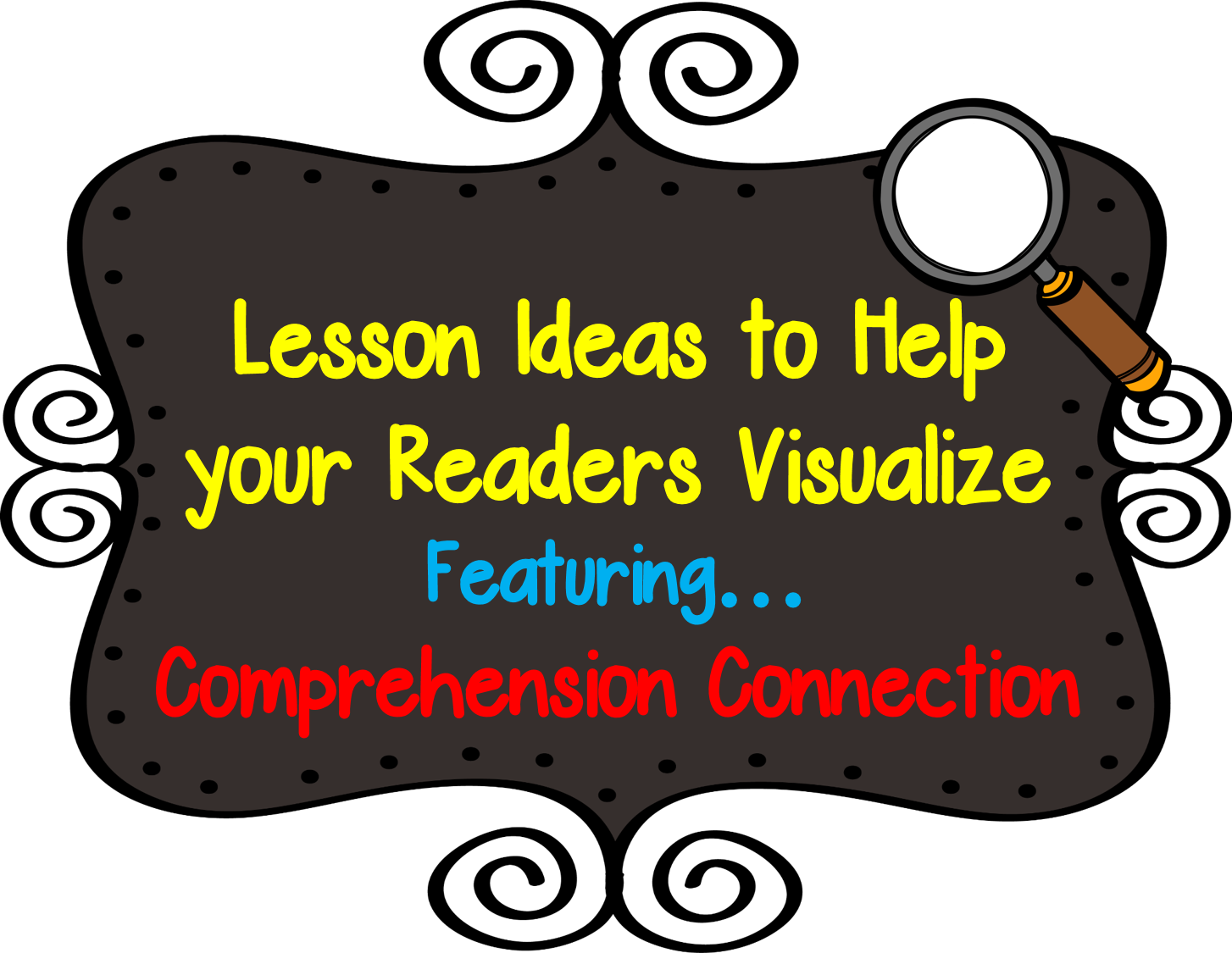Share:
As you can see, Emily has allowed me to snag her blog for the day. She’s had a very busy week welcoming her new baby into the world. The news came through yesterday that the baby arrived safely, and both mom and baby are doing well today.
I am Carla visiting from Comprehension Connection today to share suggestions related to visualizing. For some readers, this is done automatically. As I reflect on my reading instruction, I think I must have been one of those kids. I don’t recall any of my teachers explicitly teaching me to visualize or even discussing the term, but rather I think I just did it. For children that struggle with reading, this truly is a skill that needs to be taught.
So what strategies help struggling readers make those mental images? Tanny McGregor in her book, Comprehension Connections Bridges to Strategic Reading, recommends using a gradual release model and starting with a concrete experience first. She described in a segment on visualizing how she introduces visualizing with toilet paper tubes. She gives the students tubes that they can use as spy glasses, and then, she asks them,
“Why do things look so differently when you look at them through your spy glass?”
Of course, she got all kinds of ideas as we are all unique and different, and how we see things may differ too. We may notice different features, pay attention to some aspects more others, or not notice parts at all. Our schema contributes to how we visualize, and yet, if we pay attention to text clues and sensory words, we can all learn to visualize reading material. As part of the model lesson, Tanny asked the children to share a time they could really see or feel what was being read to them and what they thought made the difference. I loved that, so as I taught mine, I asked them the same question. Here are a few of their quotes.
“When my mom and I read Charlotte’s Web, I could really picture the web with the words woven into it hanging in our barn. I could also picture how Fern felt when she thought Wilbur was going to be killed. I would have screamed.”
“When my teacher read Hatchet to us last year, I could really picture the scene when Brian goes down in the airplane just like I was sitting in the front seat. The author really makes you feel like you’re there with him”
“When we were little, my mom would read to us and not let us see the pictures. I always liked how I pictured things better anyway.”
Tanny recommends using guiding question stems to help prompt kids in their discussion. This helps scaffold the thinking and provides the framework for the skill. Posting these on an anchor chart for your students to see and using them for journal responses helps the students actively think about and monitor how well they’re creating mental pictures.
I’m picturing…
I can imagine…
I can feel…
I can see…
I can touch…
I can hear…
I can taste…
My mental images include…
______ made me picture _____ like_____
Here are a few activities you might use to help students use their senses to practice visualizing:
- Have students sketch in a journal as a descriptive read aloud is shared such as Owl Moon or The Relatives Came.
- Dip cotton balls in liquids such as suntan lotion, lemon juice, and mouthwash, and let students smell them. Turn and talk with partners about what you think about when you smell them.
- Use touch bags with mystery objects and have students draw what they think is inside.
- Use magazines and locate photos that show various topics and emotions.
- Listen to an audio book and draw what you hear.
- Play audio clips of everyday sounds and have students share what images they picture.
Books recommended for modeling visualizing include the following:
 |
Sunflower House (Bunting), The Paperboy (Pilkey), In the Small, Small Pond (Fleming)
The Stories Julian Tells (Cameron), Fireflies (Hoffman), and When I was Young in the Mountain (Rylant) |
I will close with sharing a graphic organizer I developed for my students to use in monitoring their reading. I have them record the text information that helps them picture the information on the left side, and depending on your students, you can have them draw or describe what they visualize on the right.
I hope this helps your students more easily make mental pictures. After all, making meaning is the purpose of reading. Thanks for dropping by, and be sure to return on Monday for Emily’s Mentor Monday Linky with Guest Blogger Wendy from Read with Me ABC, and I hope you’ll drop by my blog soon too. I will be posting tomorrow at our collaborative blog, Adventures in Literacy Land. Have a great week, and congrats again to Emily and her family!
Share:




We Hold our Tutors to a Higher Standard, and Pay our Tutors More Fairly, than nearly any other Tutoring Company.Thus, we have Better (and more Experienced) Tutors.We accept only the top tutor applicants, and will never compromise our selectivity in order to artificially inflate our ranks. In addition, every member of the Team is required to have recently scored in the 95th percentile or above on any standardized test that he/she teaches.Math Tutor Austin, Math Tutor Atlanta, Math Tutor Houston, Math Tutor Seattle.
Math Tutor Las Vegas | Tutor for kids Las Vegas | Math Tutor Charlotte | Math Tutor Phoenix | Math Tutor Hawaii | Math Tutor Los Angeles | Math Tutor Boston | Math Tutor New York | Math Tutor Denver | Math Tutor Chicago | Math Tutor | Science Tutor Las Vegas |
Visit this page to get more apps that can expand your "must-have" list for your smartphone.